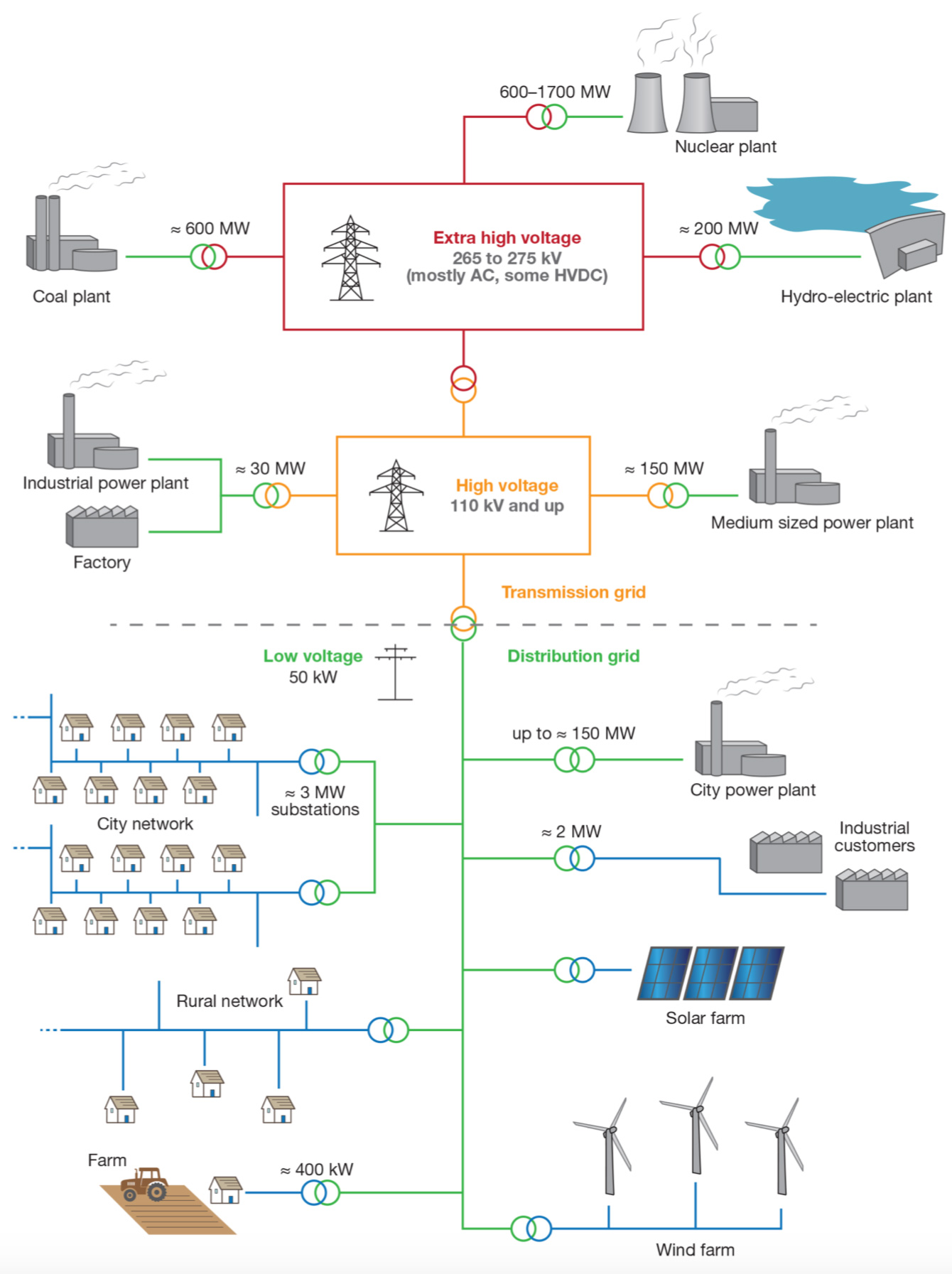Smart Grids
At sufficient scale, municipal deployment of renewables enables cities to “detach” from external energy-generating infrastructure by zeroing out their demand on regional electric grids. Once this deployment of renewables expands to the point where cities can reliably generate and store more energy than they consume, they can function as power-generating entities, like nodes on a network.
But it’s important to note that this power generation doesn’t necessarily have to plug into existing grids. Instead, they can create their own separate electric grids that operate in parallel. Multiple grids could serve the same area, which makes them highly reliable and capable of operating intelligently to respond deftly to spikes in energy demand. To explain what I mean by that, it’s useful to see how our electric grid works today and why it’s not up to par to meet the challenges it will likely face in the future.
As of 2017, our national electric grid is comprised of 7,600+ decentralized power plants[3] that are owned by 3,200+ competing utility companies[4] that transmit electricity through 450,000+ miles of high voltage power lines, relay stations and transformers.[5] In other words, it’s a total mess.
Whenever a power line goes down (storms, transformer overload, accidents), any location in the service area will go dark and will remain so until new power lines are constructed or a workaround is built. (See: Puerto Rico after Hurricane Maria).
Due to the difficulty of preventing these disruptions, electrical outages leave an average of 500,000 Americans without power for two hours or more on any given day.[6] This is a costly problem. The National University System Institute for Policy Research concluded one 2011 blackout in San Diego cost the city between $97-$118 million.[7] That's for one non-disaster-related blackout in one metropolitan area of one state. Nationwide, the Lawrence Berkeley National Laboratory suggests that power outages cost the U.S. economy some $80 billion each year.[8] Worse, in times of extreme heat or cold, blackouts can present a risk to public safety. In the past two decades, power outages have been blamed for hundreds of deaths (141 in California during a single July heatwave in 2006, for example).[9]
Addressing these problems with current methods will be both challenging and expensive, akin to making a computer built in the 1980s compete with today’s latest models. By some estimates, it will cost upwards of $1 trillion to improve U.S. electric grids to simply meet demand by 2025.[10] Municipal deployment of renewables completely changes that. A stretch of renewable-integrated highway median or solar road canopy does not need power lines – they are the power line. They are an electric grid. A business district with buildings covered in solar windows serves the same purpose.
Within a city, integrated renewables provide their own electric networks that operate on top of present infrastructure. Connected redundantly to both each other and existing electric grids, they can route and reroute energy as necessary. Paired alongside the National Aqueduct or other storage mediums, they can function as independent nodes to deliver power where it is needed most.
This provides some important side benefits. For starters, it increases the security of our electric grid multifold. To see how, take a look at the image on the following page that represents today’s electric grid at the regional scale. In this setup, if a central power line or substation were to be disabled, the entire section of the grid they serve would go dark. Our electric grid is then vulnerable to environmental disasters, terrorist attacks or freak accidents.
By integrating renewable energy within infrastructure on a large scale, our grid becomes substantially more reliable. Wide swaths of it would have to be destroyed in order for it to stop functioning completely – making it far more resilient than our current approach to electricity transmission.
Moreover, a modular, redundant electric grid provided by integrated renewables allows for improved power management by municipal utilities, affording secondary methods that can be engaged as needed based on spikes in demand or blackouts. Municipal authorities would also have an ample supply of usage data that can help create predictive models for intelligent system design. Paired with today’s sophisticated computing and accompanying software, this allows energy management to become more automated and efficient. It allows for the system as a whole to be upgraded more effectively, as the specific information the system provides can help determine the areas to best concentrate on for improvement – allowing energy networks to organically, and intelligently, evolve.
